Fire & Safety Solutions
CALL OUR TEAM NOW 0800 612 6537
Also FREE from UK mobiles
Free Delivery
on 100s of Products
Secure Payments
with our fast checkout
Online Support
Contact Us Now
30 Day Accounts
for Public Sector
5 Star Customer Feedback
Fire Door Maintenance Guide
Fire doors will only prevent fire and smoke from spreading through a building if they are in good working order. According to a study by the Fire Protection Association, 76% of the 100,000 fire doors they inspected in 2019 failed to meet current standards. Article 17 of the Regulatory Reform (Fire Safety) Order 2005 states that it is a legal requirement to ensure that fire doors are adequately maintained so that they perform as intended if a fire breaks out.
How often should fire doors be checked?
The BWF Fire Door Alliance recommends checking fire doors at least once every 6 months. This should be done by the Responsible Person for the building or organisation. . Any fire door that is used more frequently in high traffic areas will require more regular checks.
How do you check a fire door?
Follow this 6-step check for each fire door in the building:
-
Identify the Door as a Fire Rated Door
Look for a certification label or a coloured plug that is usually located on the top edge of the fire door. You could use the selfie setting on your phone camera to find the label. An uncertified door may not offer any protection. If you are not able to find this certification and are unsure whether the door is a fire door, read our guide ‘How to identity a fire door’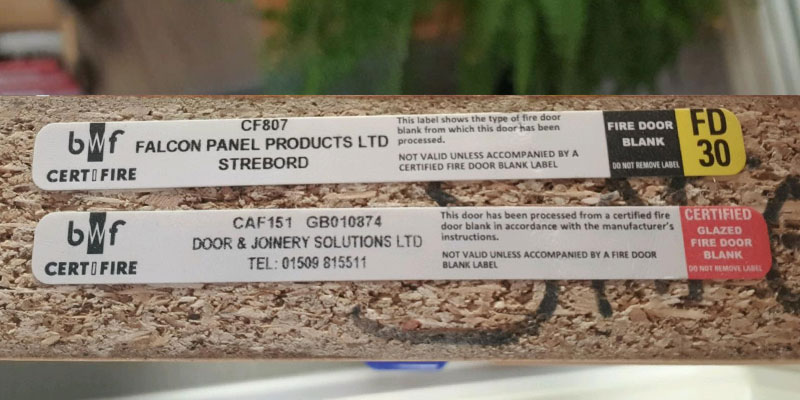
-
Check Gaps and Seals
Use a Gap Gauge to check if the gap between the door and the frame is between 2mm and 4mm all the way around. If it is larger than 4mm, smoke and fire could spread through the gaps. Intumescent seals should be fitted around the door or frame and must be in good condition. Seals trap the smoke and stop fire travelling through the gaps.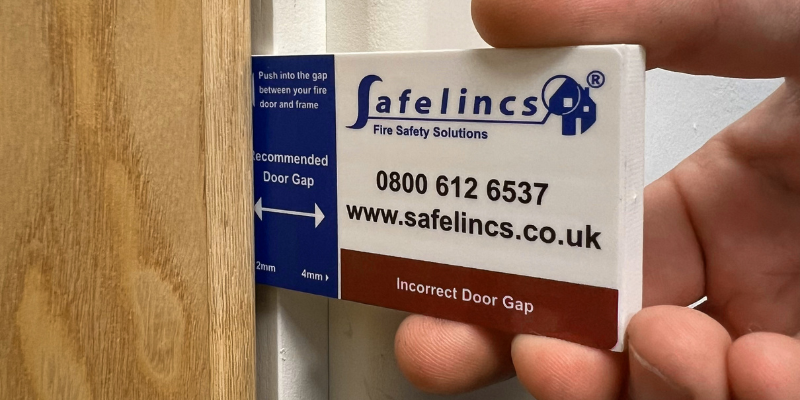
-
Check the Hinges
Fire doors should be fitted with at least 3 hinges. The hinges should have their screws intact, should be CE marked and fire rated to the same standards as the door leaf. Look out for a Certifire logo on the hinge to show that it is fire rated. A poorly fitted fire door or unfit hinge may not stop the spread of smoke or fire.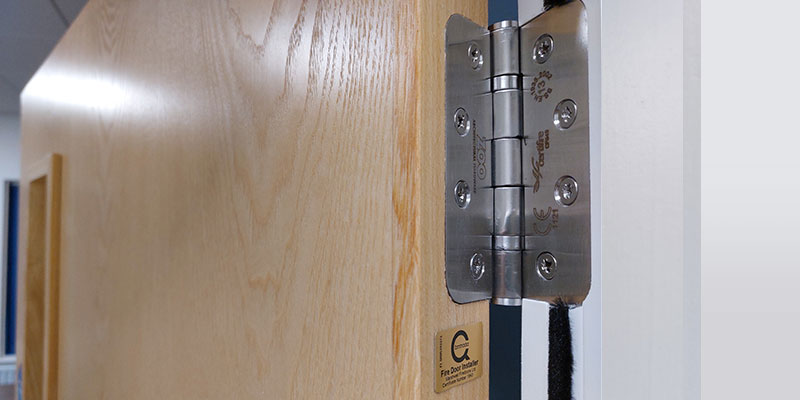
-
Check the Door Closer
Fire doors should always have a working door closer. Check that the closer is not damaged and that it shuts and latches the door from any position. It is essential that a fire door ‘latches shut’ when closing. This ensures that the Intumescent seals can function correctly to prevent the spread of fire.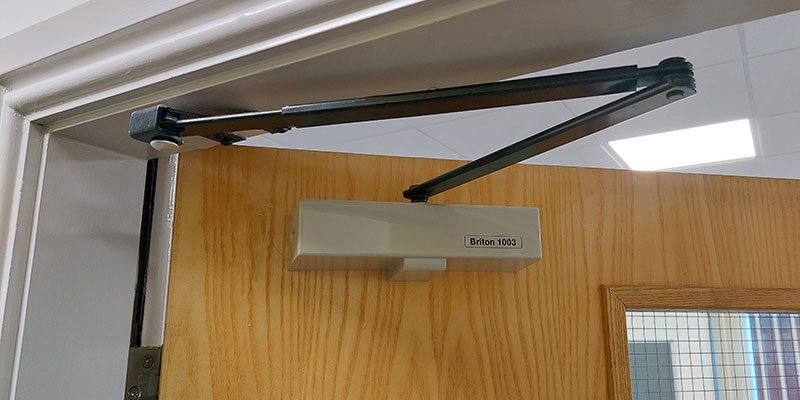
-
Check the Fire Door is Clearly Marked
All fire doors should have clear signage fitter, the type of sign will depend any fire door holders or free-swing fire door closers being fitted to your door. If a fire door holder or free-swing fire door closer is fitted a ‘Keep fire door open safely’ sign should be fitted. On a standard door 'Fire Door, Keep Shut' sign or similar should be fixed. On fire doors that are approached from two sides it is important that a sign is fitted to both sides of the door.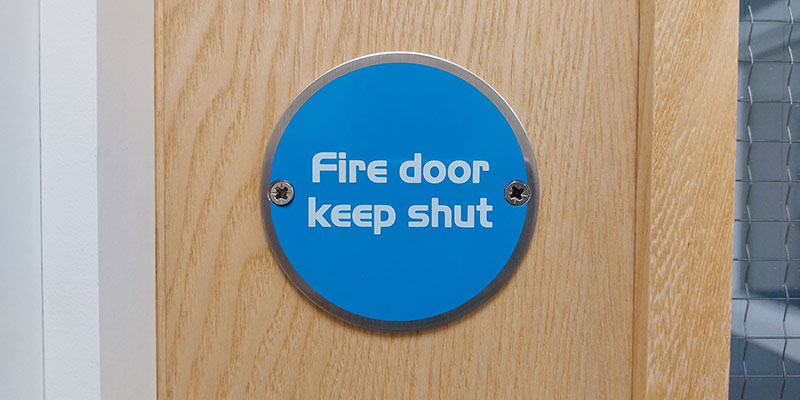
-
Check Fire Door Retainer or free-swing fire door closer
If a fire door retainer or free-swing fire door closer has been installed on the door, test that it allows the door to close when the fire alarm sounds. It is advisable to fit a 'Keep fire doors open safely' sign to any doors with a retainer to avoid confusion.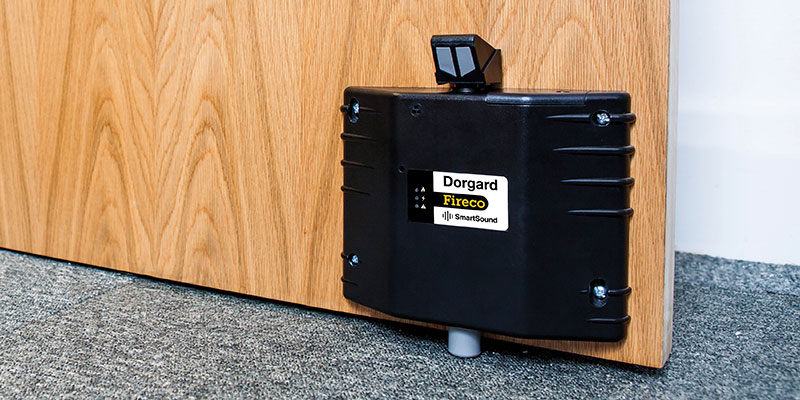
If you find any issues with your fire doors, our BRE certified inspectors and engineers offer a nationwide survey, measuring or installation service. Contact firedoors@safelincs.co.uk or call 01507 464185 for more information.
FAQ
How long do fire doors last?
There are no set rules that detail how long a fire door lasts before it needs to be replaced. The condition of the door should be monitored and checked at least every 6 months to ensure it is in good working order. Fire doors should comply with the latest fire door regulations, so it is important to keep up to date with any changes in regulations which may mean your doors are no longer fit for purpose.How do you stop fire doors slamming shut?
To stop your fire door from slamming shut you will need to adjust the closing speed or check the power size of the fire door closer fitted to the fire door. Regulations state that fire doors should self-close completely and reliably. They do not however need to bang or slam shut.Many self-closing devices can be adjusted so that the door will close correctly without slamming. Other issues including a loss of fluid or improper fitting could be causing the issue. It is also possible to fit self-closing devices with a latching action which close the door quickly at first and then stop it from slamming by closing the last few inches slowly. It is advisable to have your fire door closer maintained and adjusted by a competent person.
Can I wedge my fire door open?
Fire doors should never be propped or wedged open as the fire door would not be able to close in the event of a fire. A safe and legal solution to holding open fire doors is to install a fire door holder also known as a retainer. Fire door retainers can be easily installed onto existing doors and allow the door to be held open at any angle. They comply with regulations because when the fire alarm sounds, the door retainer releases the fire door to close, preventing the spread of fire. Fire doors should never be propped or wedged open to improve ventilation.Can I cut the bottom of my fire door to increase air circulation?
Cutting the bottom of a fire door could threaten the integrity of your fire door and could put lives at risk. If you need to increase air circulation in your building the best option is to hold your fire door open with a fire door holder or free-swing door closer. These are legal solutions that enable a fire door to be left open but will activate the automatic closing of the fire door on the sounding of fire alarm, preventing the spread of smoke and fire.How often do I need to replace my fire door?
There are no set rules about how long a fire door lasts before it needs replacing. The condition of each fire door should be monitored and checked at least every 6 months to ensure it is in good working order.Fire doors should comply with the latest fire door regulations, so it is important to keep up to date with any changes in these regulations that may mean your doors are no longer fit for purpose. Having a fire door inspection carried out by a qualified person can give you peace of mind.
Reviewed: 29/03/2022 (doc:566 V1.0). Our articles are reviewed regularly. However, any changes made to standards or legislation following the review date will not have been considered. Please note that we provide abridged, easy-to-understand guidance. To make detailed decisions about your fire safety provisions, you might require further advice or need to consult the full standards and legislation.




















